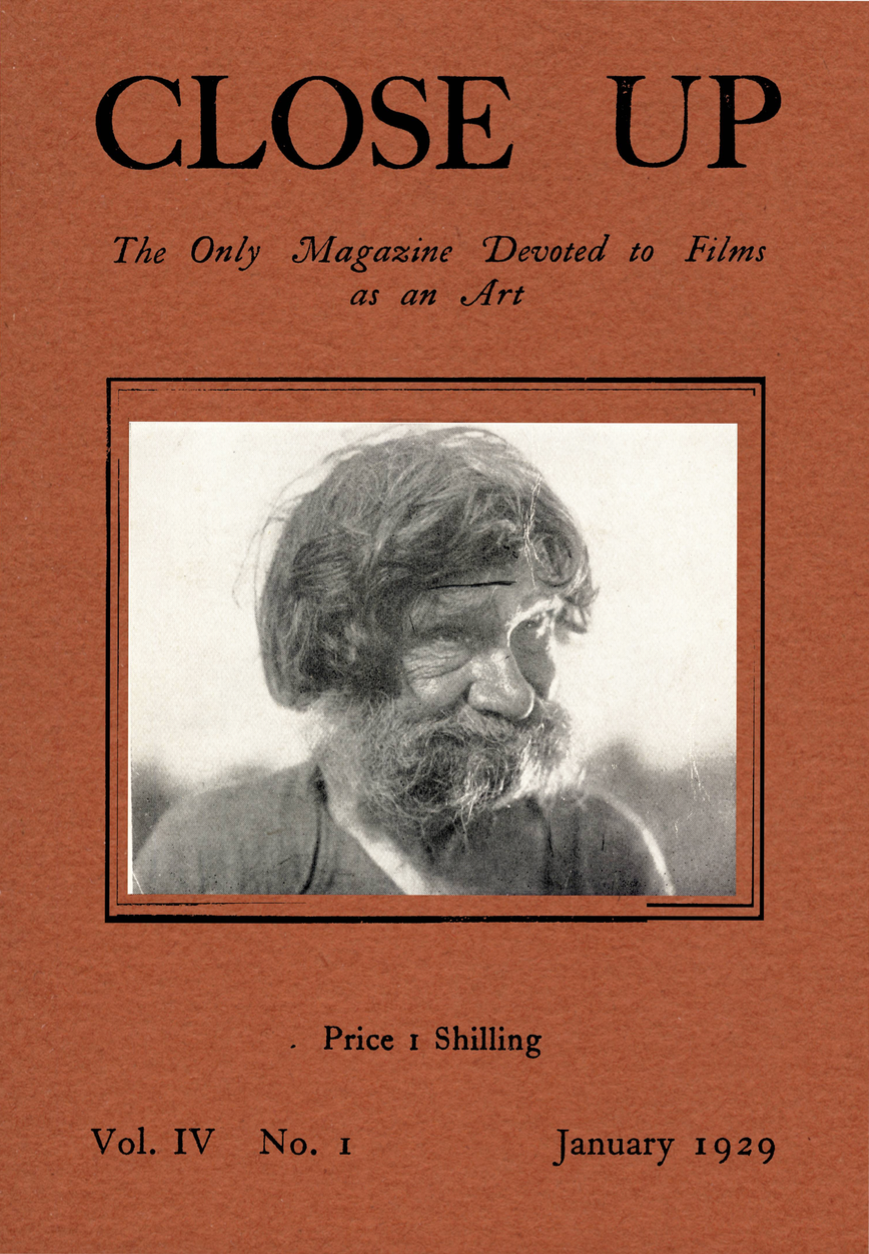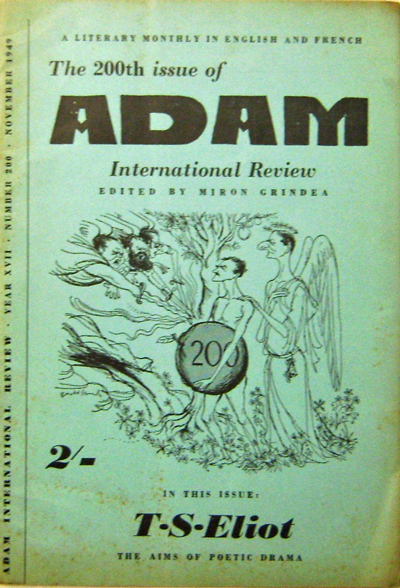
Title:
The Klaxon
Date of Publication:
1923/1924
Place(s) of Publication:
Dublin, Ireland
Frequency of Publication:
Once
Circulation:
Unknown
Publisher:
Unknown
Physical Description:
27 pages. A frontispiece of “Negro Sculpture in Wood.” A “well-printed, nicely designed little magazine, with a decorative Vorticist-like cover, professional looking yet decidedly avant-garde” (O’Malley 4).
Price:
One shilling
Editor(s):
L.K. Emery (pseudonym of A.J. Leventhal)
Associate Editor(s):
None
Libraries with Original Issues:
Unknown
Reprint Editions:
Unknown
Described by Tim Armstrong as the “Irish Blast,” The Klaxon took off in Dublin, Ireland, with an ambitious purpose (1). Self-described as “an Irish International Quarterly, published in Dublin, concerned with the activities of all Nations in matters of Art, Music, and Literature,” The Klaxon lasted only one issue before collapsing. William T. O’Malley points out that, although the solitary issue is dated Winter 1923/1924, it was reviewed in the Irish Statesman on Jan. 17, 1924, and was likely published in the first week of 1924. The Klaxon was the first little magazine to be published in the Irish Free State.
The magazine was edited by Lawrence K. Emery, a pseudonym for esteemed Dublin intellectual A.J. Leventhal (O’Brien). It featured poetry (prose and verse), a manifesto of sorts (titled “Confessional” in a tongue-in-cheek acknowledgment of Ireland’s religious heritage), a translation of Brian Merriman’s 19th century Gaelic poem “The Midnight Court,” and two critical defenses of modernist artistry in Ireland at the time.
The magazine took as its leading symbol the boisterous and riotous klaxon, and proclaimed that “with all the arrogance of youth, we step forward naked and unashamed as though for us the fig tree never grew” (Klaxon 1). Emery and his collaborators sought to “wake” Ireland up from what they saw as a moral slumber that rendered them irrelevant, and they proposed to do so by asserting their “lustiheaded youth” (“Beauty Energised”). The magazine ultimately failed to continue for financial reasons, and its contributors and editor sought other means of bringing Ireland to an artistic enlightenment. A.J. Leventhal (Emery) continued to publish in fellow Irish magainze Tomorrow and went on to replace Samuel Beckett at Trinity following the completion of his doctoral thesis (O’Brien 20).
The Klaxon’s manifesto was published in two parts, one by the editor, Lawrence K. Emery, titled “Confessional” (1), and the other by F.R. Higgins, titled “Beauty Energized” (2).
“Confessional” is self-referential, establishes a collective audience, and ventures a tentative index of beliefs, Emery’s “seven articles of faith”:
“We are the offspring of a gin and vermouth in a local public-house. We swore that we were young and could assert our youth with all its follies. We railed against the psycopedantic parlours of our elders and their old maidenly consorts, hoping the while with an excess of Picabia and banter, a whiff of Dadaist Europe to kick Ireland into artistic wakefulness.”
“We Produced our seven articles of faith: announcing primarily our belief in ourselves and a catholic aestheticism that would include the xylophone as well as the spinet. Picasso and Ingress, Shakespeare and Aldous Huxley, Beethoven and the Organ Grinder, Chaplin and Chaliapin were mingled in our incredible credo. We put the psychologist on his knees before the gymnast and punched our fellows into believing in the divine right of artists. We put the four corners of the world round Ireland and clacked our heels together with merriment at the resultant macédoine de fruits” (“Confessional” 1).
Emery concludes with a declaration of action: “we fling our speculative bonds on the waters and assert our lustiheaded youth.”
Higgins adds, “We are no more dreamers, but drunkards, standing on the remote spaces of Ireland with our eyes to ends of the earth. Those last years have mellowed our youth: we are tasting life, as athletes desiring the virility of those greeks before the squabbling days of Socrates” (2).
Lawrence K. Emery (A.J. Leventhal) (1896 – 1979)
Editor: 1923
Lawrence K. Emery was the pseudonym of Irish intellectual, A.J. Leventhal, who was the sole editor of the short-lived Klaxon. Leventhal, born in Dublin in 1896, was educated at Wesley College before being invited to London for his work in the first Zionist Commission. Following his return to Dublin, Leventhal became involved in the propagation of modernism Ireland, contributing to the Dublin Magazine, and ultimately starting The Klaxon with the intent of publishing his review of Joyce’s Ulysses. After the dissolution of the magazine, Leventhal completed a doctoral thesis and occupied the lectureship position of French Literature at Trinity College only recently vacated by Samuel Beckett. He continued to contribute to Irish newspapers and magazines as well as publish pieces of criticism on the works of Beckett and Joyce among others (O’Brien).
L .K.E.
“Confessional”
F.R.H.
“Beauty Energised”
Percy Ussher
“The Midnight Court (from the Irish)”
H. Stuart
“North”
John W. Blaine
“Cheese”
Sechilienne
“The Will of God”
Lawrence K. Emery
“The Ulysses of Mr. James Joyce”
F. R. Higgins
“Cleopatra”
G. Coulter
“An Inghean Dubh”
Thomas McGreevy
Criticism
Armstrong, Tim. “Muting the Klaxon: Poetry, History, and Irish Modernism.” Modernism and Ireland: Poetry of the 1930s. ed. Patricia Coughlan. Cork: Cork University Press, 1995. pp. 43-74.
Hoffman, Frederick J., Charles Allen, and Carolyn F. Ulrich. The Little Magazine: A History and a Bibliography. Princeton, NJ: Princeton UP, 1947.
O’Brien, Eoin. “The Writings of A.J. Leaventhal: A Bibliography.” Dublin: The Con Leventhal Scholarship Committee.
O’Malley, William T. “Modernism’s Irish Klaxon.” Technical Services Department Faculty Publications. (2003). Paper 19. Web. 9 Jun 2016.
“The Klaxon” compiled by Riley Ambrose (Class of ’13 Davidson College)



